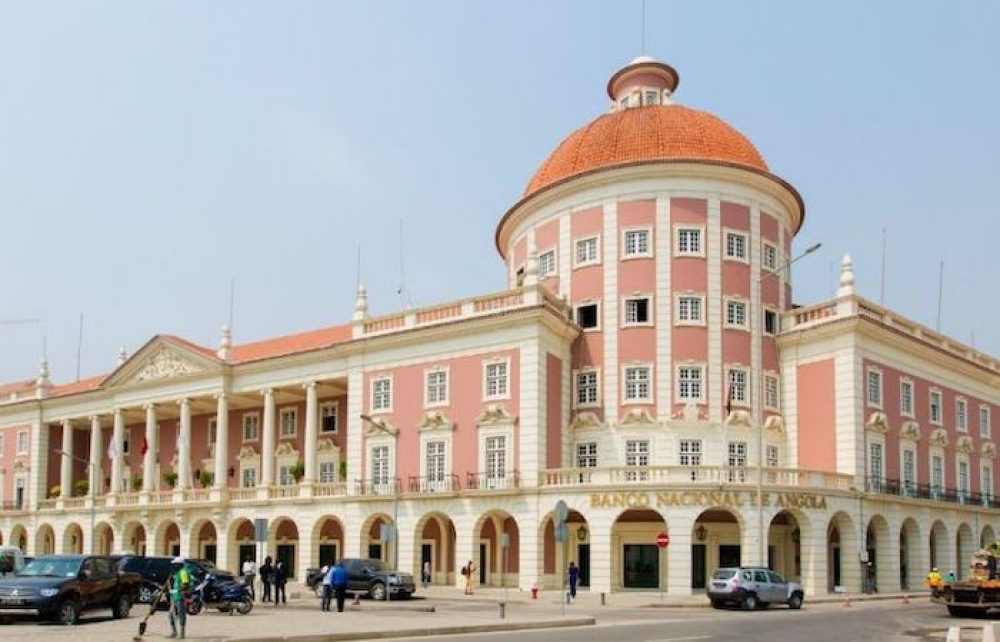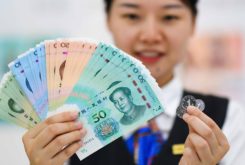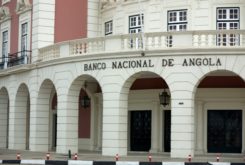The value of Angola’s currency, the kwanza, has more than halved, since the central bank implemented a floating exchange rate regime as part of its macroeconomic stabilisation programme (MSP) in January 2018. Nearly two years on, and with the country under an International Monetary Fund (IMF) programme, the kwanza continues to slide and is expected to maintain its downward trend, adding to worries about the social consequences for the country.
The kwanza’s stabilisation was the main issue for an extraordinary session convened by the Monetary Policy Committee of the central bank (BNA) on 23 October in Luanda. The final statement says the “best conditions possible” are currently in place for a market-determined exchange rate, since the launch of the MSP. It further states that this process should be “moderately quick.”
The meeting brings major implications to foreign exchange trading rules, but also to banks more widely. Commercial banks were ordered to increase local currency reserves and to remove a 2 per cent margin over the official exchange rate, in trading of foreign currency in the local interbank market.
Angola ended the kwanza’s fixed exchange rate and began to sell currencies to commercial banks at auction on 9 January 2018. The pace of these auctions has increased over time, beginning as weekly, then three times per week, the auctions are now daily.
According to central bank data, in January 2018, one euro was worth 185.4 kwanzas, while one US dollar was trading at 165.92 kwanzas. A year later, one euro was worth to 352,828 kwanzas, while one US dollar was trading at 310,158 kwanzas. Between January 2018 and June of this year, the Angolan currency lost 105 per cent of its purchasing capacity against the US dollar and 107.7 per cent against the euro.
In September, the government removed the trading band on the kwanza’s floating exchange rate, allowing it to move more than 2 per cent at auction. This move, coupled with massive daily auctions starting on 9 October, led to a record-breaking tumble in value: the kwanza dropped 33.54 per cent, to 497.35 per US dollar, this month alone. Value against the euro dropped even further, 36.36 per cent, to 551.26 kwanzas per euro.
While it holds significant potential for social disruption, analysts describe this depreciation as “in line” with IMF recommendations, placing the kwanza closer to its real value. An ongoing source of volatility in the process: the more than 30 per cent difference between this official rate and the value of the kwanza on the streets.
According to Kinguila Hoje and Angola ForEx, two websites that monitor the Angolan currency’s street value, the kwanza is trading at 655 per euro and 610 per US dollar. This data reading, from the day after the BNA’s meeting, 24 October, shows a slightly stronger kwanza than in the prior days, when it reached 620 per US dollar.
As they steer toward a currency balance, the central bank has taken a number of measures to contain price increases. The priority, according to the final statement, is to increase the flexibility of several import payment instruments. The limit for payments in advance was increased to US$50,000, and other limits to import payments eliminated. Private foreign exchange operations have a new limit set at US$120,000.
The deadline for payment of import credit letters was shortened, and the importer is now allowed to make payment as soon as he presents documents confirming the entry of merchandise into the country.
The main concern for BNA policy experts was that foreign trade could come under stress with currency fluctuations, which could lead to merchandise being retained, and prices going up. Angola is dependent on imports for the vast majority of products, including food.
The central bank expects the kwanza’s value to stabilise in the coming months. But speaking after the meeting, BNA Governor José Lima Massano offered no assurances of an equilibrium. Instead, he says he would “very much like” that balance was reached until the end of the year.
In private, the central bank’s leadership has been less confident. According to an excerpt of a 9 October meeting between BNA Deputy Governor Rui Miguens, Angolan Banks Association (ABANC) President Amílcar Silva and other bankers, expectations are of a continued devaluation of the kwanza.
“To reach market equilibrium, there will be challenges,” Miguens says. He adds that the IMF argues, in contacts with the Angolan government, that the difference between the official exchange rate and that of the kwanza in the black market should not surpass 20 per cent; it currently stands above 30 per cent.
According to the document seen by CLBrief, IMF experts also consider that the point of balance in the exchange rate has not yet been found and have argued for a removal of limits to currency exchange in the interbank market. One of the limits suggested for removal by the IMF is that of how much foreign currency banks can buy at BNA auctions.
Also to be removed, according to the same document, is the system put in place to prevent fraud in foreign currency auctions, which in the recent past were used by some banks to access euros or US dollars at time of scarcity – and later sold at a substantial profit.
To prevent fraud, the BNA has been auctioning interbank certificates of deposit (CDI), and their effect is considered successful: imported merchandise has increased 20 per cent, while payments abroad have decreased 50 per cent, meaning the use of currency is now more effective. Because of that, Miguens says, the CDI auctions should cease at the end of the first quarter of 2020.
More widely, and in political quarters, the state of the economy – which is in recession and unlikely to emerge before 2021, according to the Economist Intelligence Unit – is cause for concern. With unemployment and wage arrears rising, social protests are expected to increase.
Already on 15 October, violence broke out when a group of youths attempted to stage a rally outside the National Assembly, at a time President João Lourenço was to begin his State of the Nation address.
Then on 26 October, police used tear gas against a student march in the streets of Luanda. Students are protesting against a proposal to regulate the collection of tuition fees, starting next year, at a time when many face difficulties in meeting daily expenses.
With the economy in prolonged recession and living conditions not improving, President Lourenço’s popularity is also on a downward trend.




